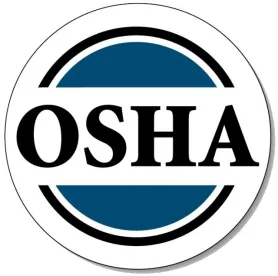In the May OSHA 30/30 program, Manesh Rath and attorney Javaneh Nekoomaram discussed a recent Occupational Safety and Health Review Commission decision, Secretary of Labor v. Wynnewood Refining Co., LLC, that centers on OSHA’s Process Safety Management Standard (PSM). The PSM Standard was promulgated in 1992 in response to numerous incidents involving catastrophic releases of toxic substances that resulted in serious worker injuries.
Background: The PSM Standard applies to any process involving a highly hazardous chemical (HHC) above certain threshold quantities prescribed in the Standard. The Standard also applies to certain flammable gases and liquids in quantities at or above 10,000 pounds. OSHA defines a “process” as any use, storage, manufacturing, handling, or on-site movement of HHCs. The Standard also defines a single process as “any group of vessels which are interconnected and separate vessels which are located such that a highly hazardous chemical could be involved in a potential release.” 29 C.F.R. 1910.119(b). OSHA has issued interpretation documents clarifying the scope of the term “process.” Employers must understand which processes are covered under the PSM Standard because coverage under the Standard triggers a multitude of regulatory obligations including performing a process hazard analysis, providing employee training and conducting compliance audits.
In the Wynnewood case, a refinery’s boiler exploded, resulting in two employee deaths. OSHA cited Wynnewood for alleged violations of the PSM Standard, eleven of which involved the boiler. The refinery argued that the boiler was not part of a covered process under the PSM Standard. The administrative law judge affirmed the eleven citations, finding that the PSM Standard applied to the boiler under both elements of the definition of a “process.” First, the boiler was “interconnected” to the fluid catalytic cracking unit, which was a covered process under the PSM Standard. Second, the boiler was centrally located, so it was co-located to covered processes, creating the potential for a catastrophic release of highly hazardous chemicals.
Wynnewood appealed this decision to the Occupational Safety and Health Review Commission (OSHRC). The OSHRC affirmed the ALJ’s decision. This decision confirms OSHA’s interpretation that the meaning of the term “process” under the PSM Standard includes 1) any group of vessels which are interconnected, and 2) separate vessels which are closely located such that a highly hazardous chemical could be involved in a potential release. OSHA and the Review Commission read “which are located such that a [HHC] could be involved in a potential release” to be a qualifier for the second element only, addressing separate vessels, and not the first element which addresses interconnected vessels.
In light of this decision, there are a number of key action items that employers should consider. Employers should evaluate whether vessels are part of a covered process under the PSM Standard, either due to the vessel containing HHCs above threshold quantities, or being interconnected with a covered process or by virtue of being closely located such that HHCs could be involved in a potential release. Employers should employ a “what-if” analysis to review their existing processes, even if a specific piece of utility equipment doesn’t contain highly hazardous chemicals, and determine the impact of a utility failure on nearby vessels that might contain highly hazardous chemicals.




 />i
/>i
